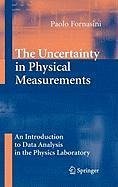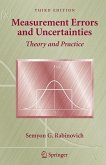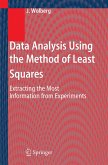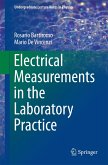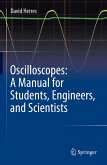All measurements of physical quantities are affected by uncertainty. Understanding the origin of uncertainty, evaluating its extent and suitably taking it into account in data analysis is essential for assessing the degree of accuracy of phenomenological relationships and physical laws in both scientific research and technological applications.
The Uncertainty in Physical Measurements: An Introduction to Data Analysis in the Physics Laboratory presents an introduction to uncertainty and to some of the most common procedures of data analysis. This book will serve the reader well by filling the gap between tutorial textbooks and highly specialized monographs. The book is divided into three parts. The first part is a phenomenological introduction to measurement and uncertainty: properties of instruments, different causes and corresponding expressions of uncertainty, histograms and distributions, and unified expression of uncertainty. The second part contains an introduction to probability theory, random variable distributions and basic statistical tools. The third part introduces the readers to some basic data analysis procedures: propagation of uncertainty, least squares fit, chi square test, and confidence intervals to name a few.
The introduction of probability and statistical tools is made on phenomenological grounds, as a natural response to the problems arising in the laboratory practice. The author has made a concentrated effort to guarantee both accuracy and clarity through the introduction of a large number of figures and worked examples, many of them taken from laboratory experimentations and practice. The book is enriched by the detailed proposal of several simple experiments.
Paolo Fornasini is a Professor of Physics at the University of Trento, Italy. He is the author, with Giuseppe Dalba, of Esercizi di Fisica: Meccanica e Termodinamica (Springer 2006).<
The Uncertainty in Physical Measurements: An Introduction to Data Analysis in the Physics Laboratory presents an introduction to uncertainty and to some of the most common procedures of data analysis. This book will serve the reader well by filling the gap between tutorial textbooks and highly specialized monographs. The book is divided into three parts. The first part is a phenomenological introduction to measurement and uncertainty: properties of instruments, different causes and corresponding expressions of uncertainty, histograms and distributions, and unified expression of uncertainty. The second part contains an introduction to probability theory, random variable distributions and basic statistical tools. The third part introduces the readers to some basic data analysis procedures: propagation of uncertainty, least squares fit, chi square test, and confidence intervals to name a few.
The introduction of probability and statistical tools is made on phenomenological grounds, as a natural response to the problems arising in the laboratory practice. The author has made a concentrated effort to guarantee both accuracy and clarity through the introduction of a large number of figures and worked examples, many of them taken from laboratory experimentations and practice. The book is enriched by the detailed proposal of several simple experiments.
Paolo Fornasini is a Professor of Physics at the University of Trento, Italy. He is the author, with Giuseppe Dalba, of Esercizi di Fisica: Meccanica e Termodinamica (Springer 2006).<
Dieser Download kann aus rechtlichen Gründen nur mit Rechnungsadresse in A, B, BG, CY, CZ, D, DK, EW, E, FIN, F, GR, HR, H, IRL, I, LT, L, LR, M, NL, PL, P, R, S, SLO, SK ausgeliefert werden.
From the reviews:
"Aiming to fill the gap between tutorial-type resources and specialized treatises, this volume, which has been tested by Fornasini's students in laboratory courses, offers a very clear, concise didactic approach to evaluating uncertainty. Actual worked examples are noted throughout the text, along with numerous figures depicting representative problems. Fornasini ... addresses issues of uncertainty concerning significant digits and rounding, use of instruments, a posteriori evaluations, moments of several probability distributions, and indirect measurements. ... Summing Up: Highly recommended. Upper-division undergraduates, researchers, and faculty." (D. J. Gougeon, Choice, Vol. 46 (10), June, 2009)
"The aim of this book ... is to describe the nature of uncertainty in physical experiments and to provide the useful statistical tools for data analysis. ... The present material is mainly addressed to the undergraduate students but could be applied by the researchers ... and by the secondary school teachers as well. ... we recommend this useful book for wide audience of readers without advanced knowledge of modern Mathematics." (Alexander V. Bulinski, Zentralblatt MATH, Vol. 1163, 2009)
"This is a book that arose from the author's 'long-lasting teaching experience' in the Department of Physics of the University of Trento ... . the author found a gap between the elementary texts used ... and the more sophisticated books written for those with an extensive background in higher mathematics. This book attempts to fill that gap. ... helpful to many students and indeed researchers. ... many of us involved in radiation dosimetry would find much of help in this volume in our day-to-day work." (Ralph H. Thomas, Radiation Protection Dosimetry, Vol. 140 (1), 2010)
"Aiming to fill the gap between tutorial-type resources and specialized treatises, this volume, which has been tested by Fornasini's students in laboratory courses, offers a very clear, concise didactic approach to evaluating uncertainty. Actual worked examples are noted throughout the text, along with numerous figures depicting representative problems. Fornasini ... addresses issues of uncertainty concerning significant digits and rounding, use of instruments, a posteriori evaluations, moments of several probability distributions, and indirect measurements. ... Summing Up: Highly recommended. Upper-division undergraduates, researchers, and faculty." (D. J. Gougeon, Choice, Vol. 46 (10), June, 2009)
"The aim of this book ... is to describe the nature of uncertainty in physical experiments and to provide the useful statistical tools for data analysis. ... The present material is mainly addressed to the undergraduate students but could be applied by the researchers ... and by the secondary school teachers as well. ... we recommend this useful book for wide audience of readers without advanced knowledge of modern Mathematics." (Alexander V. Bulinski, Zentralblatt MATH, Vol. 1163, 2009)
"This is a book that arose from the author's 'long-lasting teaching experience' in the Department of Physics of the University of Trento ... . the author found a gap between the elementary texts used ... and the more sophisticated books written for those with an extensive background in higher mathematics. This book attempts to fill that gap. ... helpful to many students and indeed researchers. ... many of us involved in radiation dosimetry would find much of help in this volume in our day-to-day work." (Ralph H. Thomas, Radiation Protection Dosimetry, Vol. 140 (1), 2010)

